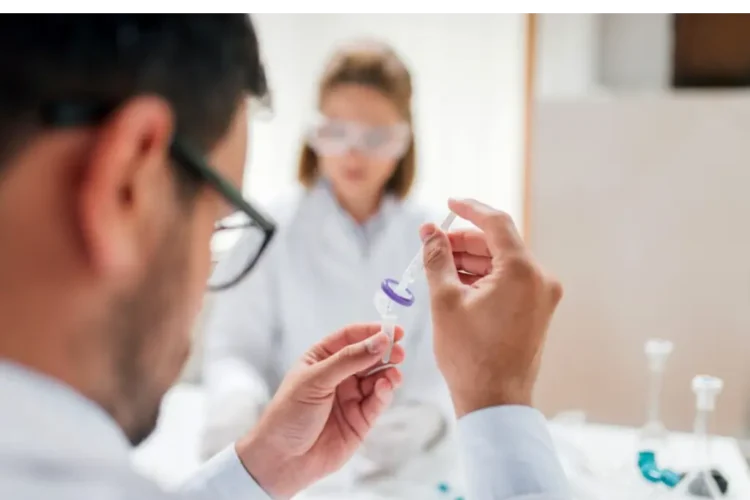
Common STDs Prone to Reinfection
Reinfection is particularly common with certain STDs, which can recur even after successful treatment. Understanding which STDs are most prone to recurrence can help individuals take the necessary precautions to protect their health. Regular STD test screenings are essential to detect any new or recurring infections early, ensuring timely treatment and reducing the risk of complications or further transmission.
Chlamydia Reinfection
Chlamydia is one of the most common STDs and is highly prone to reinfection, especially among young adults. After initial treatment, individuals may be re-exposed through sexual contact with an untreated partner, making retesting crucial within three months of treatment.
Gonorrhea Reinfection
Gonorrhea, known for its antibiotic resistance, is another STD with a high reinfection rate. Despite effective initial treatment, individuals risk contracting the infection again if exposed to an infected partner. Regular retesting is recommended to monitor and manage reinfections.
Syphilis Recurrence
Syphilis can recur if not fully treated or if exposed again. Even after treatment, the bacteria can linger, particularly in asymptomatic stages, making it necessary to follow up with repeat testing to ensure the infection has been fully cleared.
Other Recurrent STIs (Trichomoniasis, Herpes, HPV)
Other STDs such as Trichomoniasis, Herpes, and Human Papillomavirus (HPV) also pose risks of recurrence. While herpes and HPV are viral infections that can persist in the body even after symptoms subside, Trichomoniasis can recur if re-exposed, emphasizing the need for regular testing and preventive measures.
Risk Factors for STD Reinfection
- Reinfection often occurs due to behavioral, medical, and social factors. Identifying these risks can help reduce the chances of contracting the same infection again.
- Having multiple sexual partners increases the likelihood of STD exposure and reinfection. This risk is compounded if partners are not tested and treated concurrently, leading to recurring infections.
- Failing to complete the full course of prescribed treatment or not following medical advice can result in the persistence of an infection, even after symptoms have improved. This inadequate adherence can contribute to reinfection and the development of resistant strains.
- Many STDs, such as Chlamydia and Gonorrhea, can be asymptomatic, meaning individuals may unknowingly spread the infection to others. Engaging in high-risk sexual behaviors, such as unprotected sex, further increases the chances of reinfection.
- Failing to notify and treat sexual partners is a significant factor in STD reinfection. Without partner treatment, there is a high likelihood of being re-exposed to the same infection, highlighting the importance of communication and coordinated treatment.
The Role of Antibiotic Resistance in Reinfection
Antibiotic resistance is a growing concern in the treatment of STDs, particularly for infections like Gonorrhea, which have shown resistance to multiple classes of antibiotics. This resistance can complicate treatment, leading to repeat infections even after what appears to be successful treatment.
Antibiotic resistance occurs when bacteria evolve and become immune to the effects of medications previously used to treat them. This makes some STDs harder to treat and increases the risk of reinfection and ongoing transmission.
How Resistant Strains Lead to Repeat Infections
Resistant strains of STDs may not respond to standard treatments, allowing the infection to persist and spread. This makes it essential to follow through with recommended retesting and, if necessary, alternative treatments to fully clear the infection.
Preventing reinfection starts with adopting safe sex practices that reduce the risk of exposure to STDs. These measures are crucial in maintaining sexual health after treatment.
Consistent and correct use of condoms is one of the most effective ways to prevent the transmission of STDs, including those prone to reinfection. Condoms act as a barrier, significantly reducing the risk of exposure to infections during sexual activity.
Sexual Health Education and Safe Practices
- Education about safe sex practices, such as regular testing, mutual monogamy, and avoiding high-risk sexual behaviors, plays a critical role in reducing the chances of reinfection. Health clinics and sexual health providers often offer resources and counseling to support safer sexual practices.
- Ensuring that sexual partners are informed, tested, and treated if necessary is key to preventing reinfection. Partner notification helps break the cycle of transmission and protects both the individual and the community from the spread of STDs.
Diagnostic Tests for Repeat STD Testing
Repeat STD testing involves various diagnostic methods to ensure the infection has been cleared and to detect any new or recurrent infections. Understanding the different types of tests can help individuals know what to expect during retesting.
Diagnostic tests for STDs include blood tests, swab tests, and urine tests. Blood tests are commonly used for detecting infections like syphilis and HIV, while swab tests are used for Gonorrhea and chlamydia. Urine tests are often employed for a variety of bacterial STDs.
When and How to Retest After Treatment
The timing of repeat testing depends on the type of STD. For example, retesting for chlamydia and Gonorrhea is generally recommended three months after treatment, even if no symptoms are present. Syphilis may require follow-up testing to ensure the infection has been fully treated.
Retesting intervals vary based on the infection and risk factors. Public health guidelines suggest specific intervals to optimize the detection of recurrent infections and ensure that any ongoing treatment is effective.
Importance of Retesting After STD Treatment
- Repeat testing is a crucial step in managing STDs, helping to confirm that the infection has been successfully treated and detect any potential reinfections.
- Retesting helps reduce the risk of reinfection by ensuring that any remaining bacteria are identified and treated. It also provides an opportunity to reinforce safe sex practices and address any concerns with healthcare providers.
- Asymptomatic infections are a major driver of STD transmission. Regular retesting helps identify infections that may not present symptoms, preventing the spread to others and reducing the likelihood of reinfection.
- Public health organizations, including the CDC, recommend retesting as part of a comprehensive approach to managing STDs. These recommendations help guide individuals and healthcare providers in making informed decisions about follow-up care.
Recommendations for Repeat STD Testing
Healthcare professionals provide specific recommendations for repeat STD testing based on an individual’s risk factors, treatment history, and sexual activity. Following these guidelines can significantly reduce the likelihood of reinfection.
Retesting is particularly important for individuals who have had a previous STD diagnosis, engage in high-risk sexual behaviors, or have multiple sexual partners. Healthcare providers typically recommend retesting within three months of initial treatment.
Repeat Testing for High-Risk Groups
Certain groups, such as sexually active young adults, men who have sex with men, and individuals with multiple partners, are at higher risk for reinfection and should adhere to retesting guidelines more closely.
Regular health screenings and open discussions with healthcare providers about sexual activity history are essential components of sexual health maintenance. These screenings can identify potential issues early and ensure appropriate follow-up care.
Managing recurrent infections involves a combination of effective treatment adherence, behavioral changes, and ongoing communication with healthcare providers.
Strategies for Managing Repeat Infections
- Individuals with recurrent STDs should work closely with their healthcare providers to develop a plan that includes consistent retesting, education on safe practices, and adherence to prescribed treatments.
- Following the prescribed treatment regimen, including completing all medication doses, is crucial to prevent the persistence of infections. For some STDs, such as Trichomoniasis, multidose treatments may be necessary to eradicate the infection.
- Ensuring that all sexual partners are treated simultaneously is a key strategy in preventing reinfection. Safe sexual behavior, including regular condom use and mutual monogamy, further supports treatment success.
How to Prevent STD Recurrence
Prevention strategies are essential in reducing the recurrence of STDs. These include practical steps that individuals can take to protect their sexual health and reduce the risk of reinfection.
Key Prevention Strategies for STD Recurrence
Key prevention strategies include:
- Regular testing.
- Practicing safe sex.
- Reducing the number of sexual partners.
- Adhering to treatment guidelines.
Ongoing education and awareness are vital to maintaining sexual health, and one of the most important aspects to understand is the role of STD testing in preventing cervical cancer. Regular testing for STDs, particularly human papillomavirus (HPV), can lead to early detection and treatment, significantly reducing the risk of cervical cancer development.
Role of Health Clinics and Providers
Health clinics and providers play a crucial role in STD prevention by offering testing, treatment, education, and counseling services. Access to these resources helps individuals make informed decisions about their sexual health.
Educating sexual partners and raising community awareness about the importance of testing and treatment are essential in reducing the spread of STDs. Public health campaigns and accessible health services can significantly impact infection rates.
Addressing Common Myths About STD Reinfection
Misconceptions about STD reinfection can lead to complacency in prevention and treatment. Addressing these myths helps individuals better understand their risks and take proactive measures to protect their health.
One common myth is that completing treatment eliminates all risks of reinfection. In reality, reinfection is possible if exposed again, making ongoing testing and safe practices essential.
Some believe that their immune system will protect them from future infections once infected and treated. However, this is not the case for most STDs, which do not provide immunity after infection, further emphasizing the need for retesting.
Asymptomatic infections are often misunderstood, with many assuming no symptoms mean no infection. In truth, many STDs can be present without symptoms, making regular testing critical.
The Psychological Impact of STD Reinfection
The experience of reinfection can have emotional and psychological effects, including anxiety, shame, and fear of judgment. Addressing these impacts is an important aspect of comprehensive care.
Emotional and Mental Health Aspects
STD reinfection can lead to feelings of guilt, embarrassment, and anxiety, which may affect an individual’s willingness to seek retesting or treatment. Mental health support and counseling can help individuals cope with these feelings.
The stigma surrounding STDs often prevents individuals from retesting, leading to ongoing health risks. Reducing stigma through education and support can encourage more people to seek the care they need.
Support Systems and Counseling
Support systems, including counseling services and support groups, play a vital role in helping individuals navigate the challenges of STD reinfection. These resources provide a safe space to discuss concerns and receive guidance.
Conclusion
Repeat STD testing after treatment is crucial for ensuring that infections are fully cleared and for detecting any potential reinfections. Many STDs, such as chlamydia, Gonorrhea, and syphilis, are prone to recurrence, especially if partners are not treated or if safe sex practices are not consistently followed. Retesting helps to identify asymptomatic infections that might otherwise go unnoticed, allowing individuals to take timely action to prevent further spread. By following recommended retesting intervals and engaging in regular health screenings, individuals can better manage their sexual health and reduce the risk of reinfection.
Preventing STD recurrence involves a combination of safe sex practices, treatment adherence, and proactive communication with partners. Consistent condom use, partner notification, and education on sexual health are vital in breaking the cycle of reinfection. Access to reliable testing centers and health clinics ensures accurate diagnosis and effective management of recurrent infections. Staying informed about what is STD testing and engaging with healthcare providers enables individuals to protect themselves and their partners, promoting overall sexual well-being and contributing to public health efforts in reducing the spread of STDs.
FAQ’s
Can you get reinfected with an STD after treatment?
Yes, you can get reinfected with an STD after treatment if you are exposed to an untreated or newly infected partner. Reinfection is common with STDs like chlamydia, gonorrhea, and trichomoniasis, making repeat testing and safe sex practices essential.
Why do I keep testing positive for chlamydia after treatment?
Testing positive for chlamydia after treatment could indicate reinfection, incomplete treatment, or, in rare cases, antibiotic resistance. It’s crucial to ensure all sexual partners are treated and that you follow up with retesting as recommended by your healthcare provider.
How long after STD treatment should I get tested again?
Retesting is typically recommended about three months after completing treatment, especially for infections like chlamydia and gonorrhea. This helps confirm that the infection is fully cleared and checks for potential reinfections.
What should I do if my STD comes back after treatment?
If your STD returns after treatment, consult your healthcare provider immediately for retesting and possibly different or additional treatments. Ensure all partners are notified and treated, and practice safe sex to prevent further reinfections.






